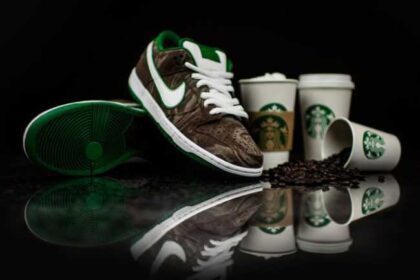For many designers, writers, photographers, and other creative professionals, landing a big client can feel like cracking a secret code. It’s not just about talent. In today’s global economy, success often hinges on building relationships, positioning expertise, and delivering consistent value. The question isn’t only how to get noticed, but how to convert that attention into long-term partnerships with brands and organizations that can elevate your career. This article explores proven strategies that top creatives use to win big clients and sustain those relationships.

Building a Strong Personal Brand
Your portfolio is no longer just a website it’s your storefront, CV, and calling card all in one. A 2023 survey by Upwork revealed that 62% of freelancers said a polished online presence was key in securing high-paying projects. A strong personal brand goes beyond aesthetics; it conveys reliability, professionalism, and uniqueness.
Consider the case of Jessica Walsh, co-founder of &Walsh. Her distinct design style and bold personal branding have attracted clients like Adobe and The New York Times. Walsh’s story highlights the importance of not blending in, but standing out with a signature style and story.
Key Steps:
- Create a consistent visual and verbal identity.
- Share thought leadership on platforms like LinkedIn or Medium.
- Showcase case studies with measurable results, not just visuals.
Networking With Intention
Networking is more than attending events it’s about purposeful relationship-building. According to LinkedIn’s 2022 Global Talent Trends report, 85% of jobs are filled through networking. For creatives, the same applies when pursuing clients.
One practical approach is “value-first outreach.” Instead of cold-pitching, offer insights that help a potential client immediately. For example, a photographer might suggest creative directions for a brand’s upcoming campaign without charging upfront. This positions you as a trusted partner rather than a vendor.
Key Steps:
- Attend industry-specific conferences and showcase your work.
- Use social media for direct engagement with brand decision-makers.
- Collaborate with other creatives to gain wider exposure.
Leveraging Testimonials and Case Studies
Trust is currency in the creative industry. Big clients want proof that you can handle their scale and expectations. Case studies are more powerful than portfolios alone because they demonstrate impact, not just output.
For instance, British illustrator Malika Favre often highlights collaborations with Vogue and The New Yorker by detailing the story behind each project. This narrative builds credibility and attracts clients who value both process and results.
Key Steps:
- Collect testimonials from every client, regardless of size.
- Build detailed case studies with metrics such as engagement, sales lift, or audience growth.
- Feature client logos (with permission) prominently on your website.
Adapting to Client Cultures
Landing a big client also means aligning with their culture and communication style. A 2021 Deloitte survey found that 94% of executives believe workplace culture directly impacts success. For creatives, understanding a client’s organizational values can make or break a relationship.
For example, when Nike collaborates with freelance creatives, they expect alignment with their ethos of innovation and inclusivity. Creatives who demonstrate cultural fit are more likely to secure repeat business.
Key Steps:
- Research a client’s brand values and adapt your pitch accordingly.
- Mirror their communication style whether formal reports or quick visual mockups.
- Demonstrate flexibility while maintaining your creative voice.
Mastering the Art of the Pitch
Pitching is an art. A successful pitch isn’t a monologue; it’s a dialogue that shows understanding of the client’s pain points and offers tailored solutions. According to HubSpot’s 2023 State of Sales report, personalized pitches increase close rates by 50%.
Take the example of New York-based agency Sagmeister & Walsh. Their pitches often combine bold visuals with strategic storytelling, making them memorable and persuasive.
Key Steps:
- Research the client’s current challenges before reaching out.
- Keep pitches concise and focused on value, not just aesthetics.
- Use storytelling to make your ideas emotionally compelling.
Consistency and Professionalism
Big clients are risk-averse. They value consistency, reliability, and professionalism as much as raw creativity. Missing deadlines or overpromising can end partnerships before they begin.
Netflix, for example, is known for working with creatives who can deliver at scale without compromising quality. Their long-term collaborations with independent creators stem from trust built over time.
Key Steps:
- Deliver work on time, every time.
- Set clear expectations on scope and timelines.
- Follow up with reports or debriefs to demonstrate accountability.

Conclusion: Turning Big Wins Into Long-Term Partnerships
Landing a big client is not the finish line it’s the starting point for building a sustainable creative career. By focusing on personal branding, intentional networking, credible case studies, cultural alignment, persuasive pitching, and consistent professionalism, creatives can not only win but also keep big clients.
The creative economy is expanding globally, and opportunities for collaboration with major brands are growing. Those who master these strategies will position themselves as indispensable partners rather than replaceable vendors.






